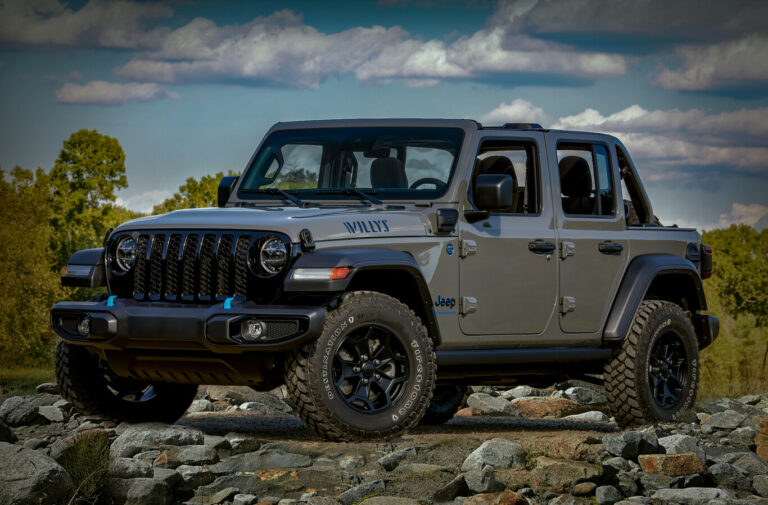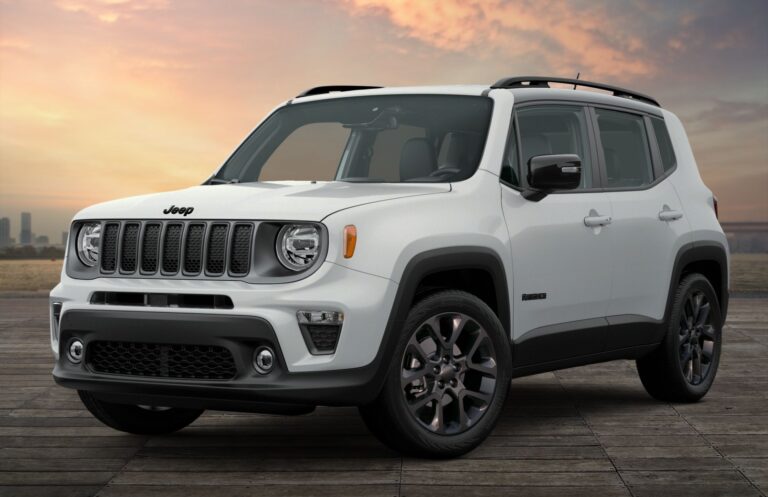1998-2002 Jeep Cherokee For Sale: A Comprehensive Buyer’s Guide
1998-2002 Jeep Cherokee For Sale: A Comprehensive Buyer’s Guide jeeps.truckstrend.com
The Jeep Cherokee XJ, particularly the models produced between 1998 and 2002, holds a unique and revered place in automotive history. Far from being just another used SUV, these vehicles represent a golden era of utilitarian design, legendary reliability, and unparalleled off-road capability in a compact package. For many enthusiasts and practical buyers alike, the 1998-2002 Jeep Cherokee isn’t just a car; it’s an icon, a canvas for customization, and a dependable workhorse. This guide aims to provide a comprehensive look at what makes these specific years so desirable, what to look for when buying one, and how to maintain your investment for years to come.
Why the 1998-2002 Jeep Cherokee XJ Still Matters
1998-2002 Jeep Cherokee For Sale: A Comprehensive Buyer’s Guide
The Jeep Cherokee XJ’s production run from 1984 to 2001 (for the North American market, with global production extending to 2002) saw it evolve into a true legend. The 1998-2002 models represent the pinnacle of its final iteration, incorporating refined features and reliability improvements while retaining the robust, unibody construction and the venerable 4.0-liter inline-six engine that made it famous.
These later XJs are sought after for several compelling reasons:
- Legendary Durability: The 4.0L "PowerTech" inline-six engine is renowned for its longevity, often exceeding 200,000 or even 300,000 miles with proper maintenance.
- Unmatched Off-Road Prowess: Despite its relatively compact size, the XJ’s solid axles, durable drivetrain options (especially the NP231 transfer case), and short overhangs give it exceptional off-road performance straight from the factory.
- Simplicity and Serviceability: The XJ is remarkably easy to work on, making it a favorite for DIY mechanics. Parts are abundant and relatively inexpensive.
- Strong Aftermarket Support: A vast array of aftermarket parts and accessories exist, allowing owners to customize their XJ for anything from extreme rock crawling to comfortable overland travel.
- Timeless Design: The XJ’s boxy, no-nonsense styling has aged gracefully, giving it a classic and rugged appeal that modern SUVs often lack.
- Affordability: Compared to newer 4x4s, a well-maintained XJ offers incredible value for its capabilities.

For those seeking a versatile, capable, and character-filled vehicle that can serve as a daily driver, a weekend adventurer, or a dedicated off-road rig, the 1998-2002 Jeep Cherokee XJ remains an outstanding choice.
Key Features and Specifications of the 1998-2002 XJ
While the overall design remained consistent, these later models benefited from earlier refinements, including the redesigned dashboard and improved sound deadening introduced in 1997.

Engine:
- 4.0L (242 cu in) AMC I6 (PowerTech): This inline-six cylinder engine is the heart and soul of the XJ. Producing around 190 horsepower and 225 lb-ft of torque, it provides ample low-end grunt, perfect for off-roading and daily driving. Its cast-iron block and simple design contribute to its legendary reliability.
- Note on 2002 models: While the XJ officially ended US production in 2001, some markets (like South America) continued assembly into 2002. These are rarer finds in North America.
Transmissions:
- Automatic (AW4): The Aisin-Warner AW4 4-speed automatic transmission is incredibly robust and reliable, often outlasting the engine itself if properly maintained. It’s the most common transmission found in these years.
- Manual (NV3550): A 5-speed manual transmission was available, offering more direct control and arguably better fuel economy, though it is less common. Prior to 2000, the AX-15 was used, and from 2000-2001, the NV3550 was standard for manual Cherokees.
Transfer Cases:
- NP231 Command-Trac: A part-time 4WD system with 2HI, 4HI (part-time), N, and 4LO. It’s incredibly strong and popular for off-road use, but cannot be used on dry pavement in 4WD modes.
- NP242 Selec-Trac: A full-time 4WD system with 2HI, 4HI (full-time), 4HI (part-time), N, and 4LO. This offers more versatility, allowing the driver to use 4WD on pavement, making it ideal for varying weather conditions.
Axles:
- Front: Dana 30 (high-pinion or low-pinion, depending on year/trim).
- Rear: Most came with the Dana 35, which is adequate for stock use but can be weak with larger tires and heavy off-road use. The more desirable Chrysler 8.25 (29-spline for these years) is a stronger alternative found in some trims and is highly preferred for its durability.
Trim Levels (Common in 1998-2001):
- Sport: The most common trim, offering a balance of features and affordability. Often comes with the NP231.
- Classic: Similar to the Sport but with some added exterior and interior enhancements, often including color-matched bumpers.
- Limited: The top-tier luxury trim, featuring leather seats, power options, and sometimes the NP242 transfer case.
- Country: A popular trim with unique styling cues, often including two-tone paint and specific interior fabrics.
What to Look For When Buying a 1998-2001 Jeep Cherokee XJ
Buying a used XJ requires a keen eye and a thorough inspection. These vehicles are old, and their condition will vary wildly depending on previous ownership and environment.
1. Rust: This is the #1 killer of XJs, especially in regions that use road salt.
- Unibody Frame Rails: Check thoroughly, especially near the steering box and under the front seats. Look for cracks or severe corrosion.
- Rocker Panels: Prone to rust, particularly near the doors.
- Floorboards: Lift the carpet and check for holes or soft spots.
- Rear Quarter Panels: Check behind the rear wheels.
- Underneath the Carpet in the Cargo Area: Moisture can get trapped here.
- Door Sills and Hatch: Common rust spots.
2. Engine (4.0L I6):
- Oil Leaks: Common, but usually manageable. Check the rear main seal (often drips, but not always critical), oil filter adapter, and valve cover gasket.
- Cooling System: XJs are sensitive to overheating. Check the radiator (for leaks/clogging), water pump, thermostat housing (prone to cracking), fan clutch, and hoses. Look for signs of coolant leaks or sludge in the overflow bottle.
- "Death Wobble": Not engine-related, but a severe vibration felt through the steering wheel, usually at highway speeds. It’s a symptom of worn steering and suspension components (track bar, ball joints, tie rod ends, control arm bushings). Negotiate if present.
- Start-up and Idle: Listen for unusual noises (knocking, ticking, excessive lifter noise). Check for smooth idle.
3. Transmission (AW4 Automatic):
- Fluid Condition: Check the transmission fluid. It should be red and clear, not brown or burnt-smelling.
- Shift Quality: During a test drive, ensure shifts are smooth and timely, without harshness or slipping.
- Overdrive Engagement: Ensure it shifts into overdrive at highway speeds.
4. Transfer Case:
- Fluid Leaks: Check for leaks around the seals.
- Functionality: Test all 4WD modes (2HI, 4HI, 4LO, and 4-part-time/full-time if NP242). Listen for grinding or clunking.
5. Suspension and Steering:
- Leaf Springs: Check the rear leaf springs for sagging, indicating wear.
- Bushings: Inspect control arm bushings, sway bar bushings, and leaf spring bushings for cracks or deterioration.
- Ball Joints and Tie Rod Ends: Check for excessive play.
- Shocks: Look for leaks or excessive bouncing.
6. Electrical Issues:
- Test all power windows, door locks, mirrors, radio, gauges, and interior/exterior lights.
- Check for flickering dash lights or non-functional gauges.
- The "door jamb wire harness" can fray, causing window/lock issues.
7. Interior Condition:
- Check seats for rips, tears, or excessive wear.
- Test HVAC controls, fan speeds, and heat/AC.
- Ensure all seatbelts function correctly.
Practical Advice for Buyers:
- Get a Pre-Purchase Inspection (PPI): If you’re not mechanically inclined, pay a trusted mechanic (preferably one familiar with Jeeps) to inspect the vehicle.
- Check Maintenance Records: A well-documented service history is a huge plus.
- Test Drive Thoroughly: Drive on various roads, including highway speeds, and try the 4WD system if safe to do so. Listen for unusual noises.
- Be Patient: Don’t rush into a purchase. There are many XJs out there; wait for the right one.
- Factor in Repair Costs: Even a good XJ will likely need some attention. Budget for immediate repairs and future maintenance.
Maximizing Your Investment: Maintenance and Upgrades
Owning a 1998-2002 Jeep Cherokee XJ is a commitment, but a rewarding one. Proactive maintenance and thoughtful upgrades can significantly extend its life and enhance its capabilities.
Essential Maintenance:
- Regular Fluid Changes: Engine oil, transmission fluid, transfer case fluid, differential fluid, and coolant. This is paramount for the longevity of all components.
- Cooling System Overhaul: If unsure of the history, replacing the radiator, water pump, thermostat, and all hoses is a wise investment to prevent overheating.
- Tune-Up: New spark plugs, wires, distributor cap, and rotor (if applicable for your specific year) can keep the engine running smoothly.
- Grease Zerk Fittings: Regularly grease steering and suspension components.
- Rust Prevention: Clean the undercarriage regularly, especially after driving in salty conditions. Consider applying rust-inhibiting coatings.
Popular Upgrades:
- Lift Kits: Ranging from 1.5 inches to 6.5+ inches, these improve ground clearance and allow for larger tires.
- Larger Tires: Crucial for off-road performance, but ensure they clear the fenders and don’t rub.
- Aftermarket Bumpers and Rock Sliders: Protect the vehicle from trail damage and provide recovery points.
- Winch: Essential for self-recovery in challenging off-road situations.
- Lockers: Front and/or rear differential lockers dramatically improve traction in extreme conditions.
- Skid Plates: Protect vital components like the oil pan, transfer case, and fuel tank.
- Improved Lighting: LED light bars or auxiliary lights for enhanced visibility off-road.
- Heavy-Duty Steering Components: Upgrading the steering system can mitigate "death wobble" and improve durability.
The XJ’s robust aftermarket means you can tailor it precisely to your needs, whether it’s a mild overland rig, a dedicated rock crawler, or a reliable daily driver with a bit more clearance.
Navigating the Market: Price and Availability
The price of a 1998-2002 Jeep Cherokee XJ can vary significantly based on several factors:
- Condition: Rust-free, well-maintained examples command a premium.
- Mileage: Lower mileage typically means higher price, but maintenance history is more critical than just the odometer reading.
- Trim Level: Limited and Country trims might fetch slightly more due to added features.
- Modifications: Tasteful, well-executed modifications can add value, but poorly done ones can detract.
- Location: XJs in rust-free states (e.g., Southwest US) tend to be more expensive but are often in much better shape.
- Demand: The XJ’s popularity keeps prices relatively stable, sometimes even appreciating for pristine examples.
Where to Look:
- Online Marketplaces: Craigslist, Facebook Marketplace, eBay Motors, AutoTrader.
- Dedicated Forums and Enthusiast Groups: Jeep Cherokee forums and Facebook groups often have "for sale" sections where you can find well-cared-for examples from enthusiasts.
- Local Dealerships (Rarely): Most dealers won’t have XJs unless they specialize in older 4x4s.
- Word of Mouth: Let friends and family know you’re looking.
Negotiation Tips:
- Be Informed: Know the common issues and average prices.
- Point Out Flaws: Use any defects or maintenance needs you identify as negotiation points.
- Have Cash Ready: A cash offer can often sway a private seller.
1998-2002 Jeep Cherokee For Sale: Estimated Price Guide
Please note these are estimated price ranges and can fluctuate based on specific market conditions, geographic location, seller urgency, and the presence of desirable options (e.g., Chrysler 8.25 axle, Selec-Trac transfer case). Prices are for US market.
| Condition | Estimated Price Range (USD) | Key Characteristics |
|---|---|---|
| Poor | $1,500 – $3,500 | Significant rust (frame, rockers), major mechanical issues (engine/trans problems), high mileage (>200k), neglected maintenance, interior damage. Suitable for parts or full rebuild. |
| Fair | $3,500 – $6,000 | Moderate rust, some mechanical issues (leaks, worn suspension), high mileage (>180k), needs significant TLC, interior wear. Good for project vehicle or budget off-roader. |
| Good | $6,000 – $9,500 | Minor surface rust only, generally sound mechanically, mid-to-high mileage (120k-180k), well-maintained, functional interior. Suitable for daily driver or light trail use. |
| Excellent | $9,500 – $15,000+ | Minimal to no rust, strong running engine/transmission, lower mileage (<120k), comprehensive maintenance records, clean interior and exterior, possibly light, tasteful modifications. |
Note: Highly customized or exceptionally pristine, low-mileage examples can sometimes fetch higher prices, particularly if they are rare trims or have desirable factory options.
Frequently Asked Questions (FAQ)
Q1: Is the 4.0L engine truly as reliable as people say?
A1: Yes, the 4.0L inline-six is legendary for its durability. With basic maintenance (regular oil changes, cooling system care), it’s common to see them run for 200,000 to 300,000 miles or more.
Q2: What’s the main difference between the NP231 and NP242 transfer cases?
A2: The NP231 (Command-Trac) is a part-time 4WD system, meaning you can only use 4HI or 4LO on loose surfaces (dirt, snow, mud) to prevent drivetrain binding. The NP242 (Selec-Trac) offers a "Full-Time 4WD" option, allowing you to use 4WD on pavement, which is great for varying weather conditions. Both are very robust.
Q3: Can a 1998-2002 Jeep Cherokee be a reliable daily driver?
A3: Absolutely, with proper maintenance and addressing common issues proactively. Many XJ owners use them as daily drivers. Their relatively compact size and decent fuel economy (for a 4×4) make them practical.
Q4: Is rust always a major concern with these Jeeps?
A4: Yes, rust is the biggest enemy of the XJ, especially in areas where road salt is used. Thoroughly inspect the unibody frame rails, rocker panels, and floorboards. A rust-free example, while harder to find, is worth the premium.
Q5: What’s the average fuel economy for the 4.0L XJ?
A5: Expect around 15-18 miles per gallon (MPG) combined for the 4.0L engine. This can vary based on driving style, tire size, lift, and vehicle condition.
Q6: Are parts readily available for these older Cherokees?
A6: Yes, parts availability is excellent. Due to the XJ’s popularity and long production run, OEM, aftermarket, and used parts are widely available and generally affordable.
Q7: Which rear axle is better, the Dana 35 or the Chrysler 8.25?
A7: The Chrysler 8.25 (specifically the 29-spline version found in these later years) is generally considered stronger and more desirable than the Dana 35, especially if you plan on significant off-roading or running larger tires.
Conclusion
The 1998-2002 Jeep Cherokee XJ remains a highly desirable vehicle for its blend of rugged capability, mechanical simplicity, and iconic design. While buying an older vehicle always comes with considerations, a well-chosen XJ from these final production years offers immense value as a reliable daily driver, an adventurous off-road companion, or a rewarding project vehicle. By understanding its strengths, knowing what common issues to look for, and committing to proper maintenance, you can ensure that your investment in this classic American SUV will provide years of dependable service and countless adventures. The spirit of the XJ lives on, waiting for its next owner to write its story.







